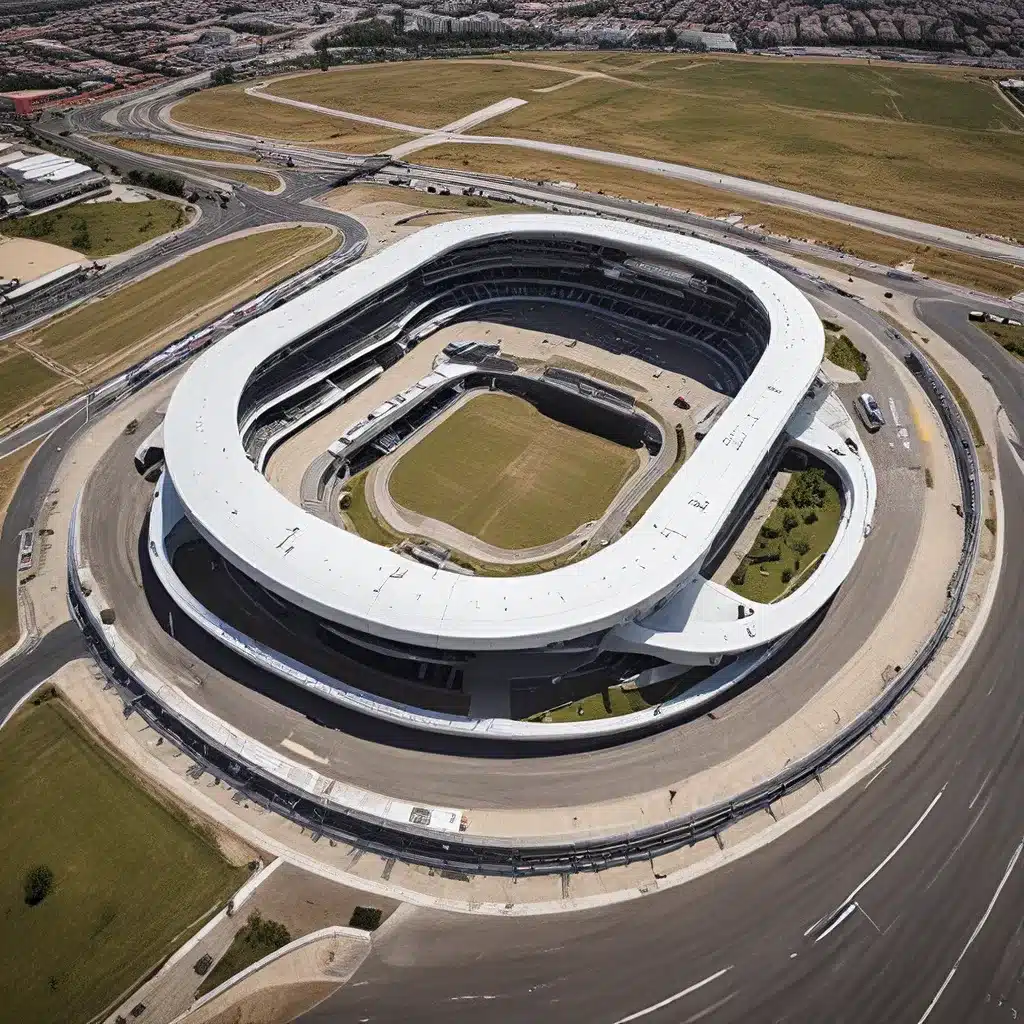
The Architectural Evolution of Mexico City’s Iconic Racetrack
The Autódromo Hermanos Rodríguez, located in Mexico City, is a testament to the city’s architectural prowess and its commitment to creating innovative sports venues. This iconic racetrack has undergone a remarkable transformation in recent years, emerging as a shining example of how modern design can seamlessly integrate with the rich cultural heritage of the region.
Tracing the Racetrack’s History
The Autódromo Hermanos Rodríguez first opened its doors in 1962, named after the famous Mexican racing brothers, Ricardo and Pedro Rodríguez. The original design, conceived by architect Teodoro González de León, was a testament to the country’s burgeoning motorsports scene. The racetrack quickly became a hub for international racing events, hosting the Mexican Grand Prix of the Formula One World Championship from 1963 to 1970, and then again from 1986 to 2019.
However, as the years passed, the Autódromo Hermanos Rodríguez began to show its age, prompting the need for a comprehensive renovation. In 2015, the Mexican government and the city of Mexico City embarked on a ambitious project to revitalize the racetrack, with the goal of transforming it into a world-class sports and entertainment destination.
A Futuristic Reimagining
The task of redesigning the Autódromo Hermanos Rodríguez was entrusted to a team of renowned architects, led by the esteemed firm Populous. Their vision was to create a stadium that would not only be a state-of-the-art facility for motorsports, but also a versatile venue that could host a wide range of events, from concerts to festivals.
One of the most striking features of the new design is the use of bold, angular forms that evoke the dynamism and speed of the racetrack. The grandstands, for example, feature a series of sweeping, aerodynamic curves that seem to propel the structure forward, mirroring the motion of the cars on the track. The futuristic aesthetic is further enhanced by the extensive use of glass and steel, creating a sense of transparency and lightness that is both visually striking and functionally efficient.
Architectural renderings of the redesigned racetrack reveal a captivating interplay of light and shadow, with the glass and steel structures casting intricate patterns across the surfaces. The use of natural lighting is a key design element, with strategically placed skylights and open-air spaces allowing the stadium to be flooded with natural illumination.
Sustainable and Multifunctional Design
Sustainability was another crucial consideration in the Autódromo Hermanos Rodríguez’s redesign. The architects incorporated a range of eco-friendly features, including solar panels, water-efficient systems, and extensive landscaping that helps to mitigate the urban heat island effect. The result is a stadium that not only looks visually striking, but also operates in a more sustainable and environmentally responsible manner.
One of the most impressive aspects of the redesigned Autódromo Hermanos Rodríguez is its multifunctional capabilities. In addition to hosting motorsports events, the stadium can be transformed into a versatile entertainment hub, with spaces designed to accommodate a wide range of activities, from concerts and festivals to conferences and cultural events.
Embracing Mexico City’s Cultural Fabric
The Autódromo Hermanos Rodríguez’s redesign not only reflects the city’s commitment to architectural innovation, but also its deep respect for its cultural heritage. The stadium’s design is inspired by the maritime history and traditional architecture of the region, with elements that nod to the country’s rich cultural identity.
For example, the stadium’s undulating roof structure is reminiscent of the sails of traditional Mexican boats, known as “dhows.” This integration of regional influences helps to ensure that the Autódromo Hermanos Rodríguez remains firmly rooted in the cultural fabric of Mexico City, while also embracing a bold, forward-thinking vision.
Unlocking New Possibilities
The revitalized Autódromo Hermanos Rodríguez is poised to become a true showcase for Mexico City’s architectural prowess and its commitment to creating dynamic, multifunctional spaces. By blending cutting-edge design with a deep respect for the region’s cultural heritage, the stadium has the potential to redefine the way we think about sports and entertainment venues, not just in Mexico, but around the world.
As the city continues to evolve and grow, the Autódromo Hermanos Rodríguez stands as a testament to the power of visionary thinking and the ability of architecture to transform the urban landscape. With its futuristic design, sustainable features, and multifunctional capabilities, this iconic racetrack is set to become a hub of activity, innovation, and cultural celebration for generations to come.
So, whether you’re a motorsports enthusiast, a music lover, or simply someone who appreciates the beauty of cutting-edge architecture, the Autódromo Hermanos Rodríguez is a must-visit destination in Mexico City. By exploring this remarkable stadium, you’ll not only be captivated by its stunning design, but you’ll also gain a deeper appreciation for the city’s vibrant cultural heritage and its commitment to creating truly extraordinary public spaces.
